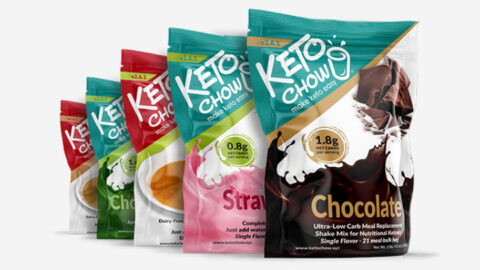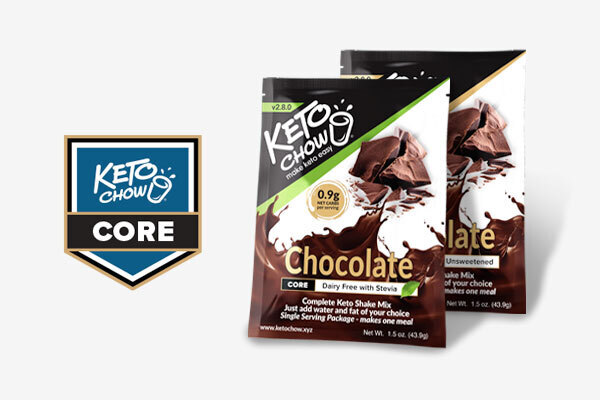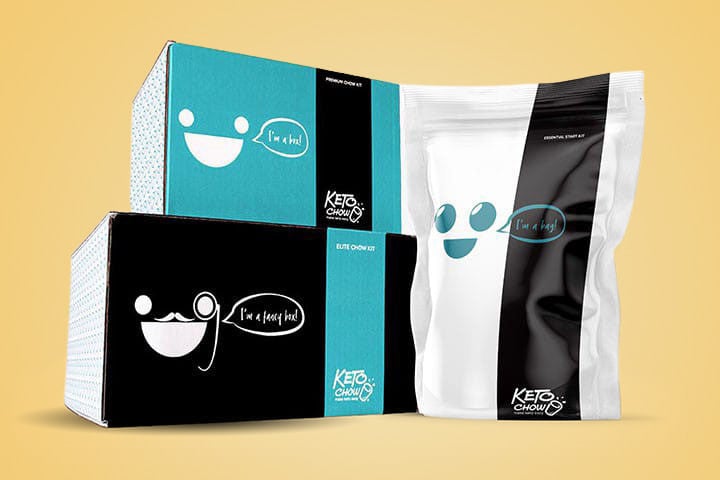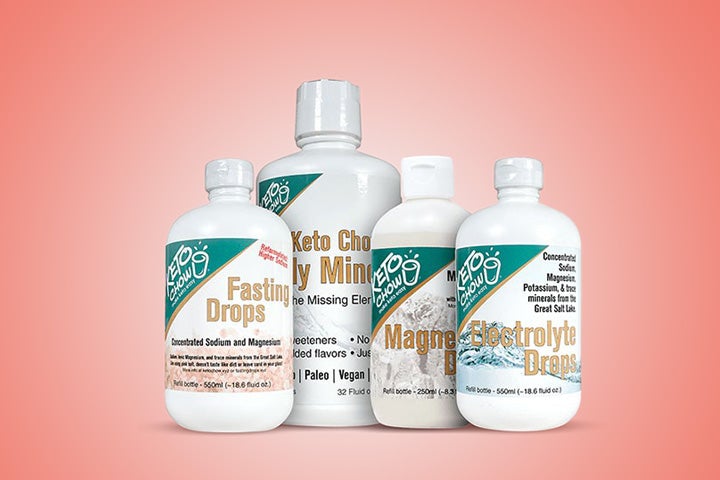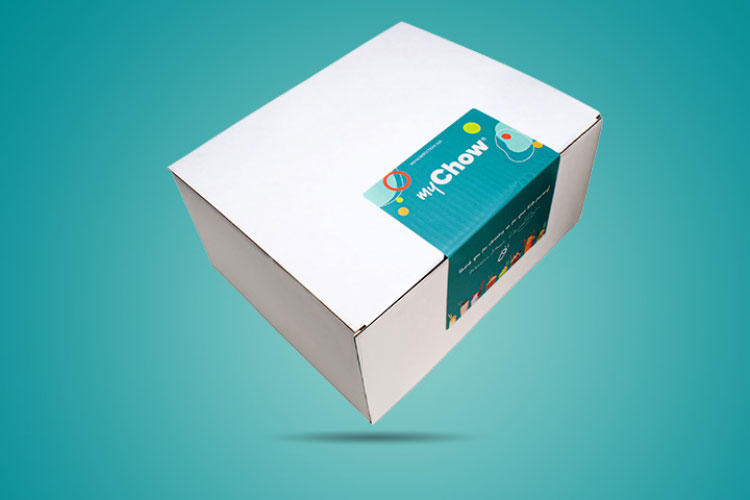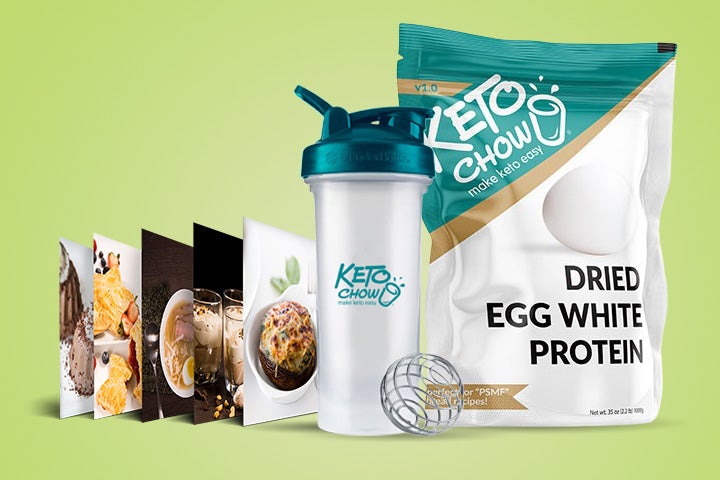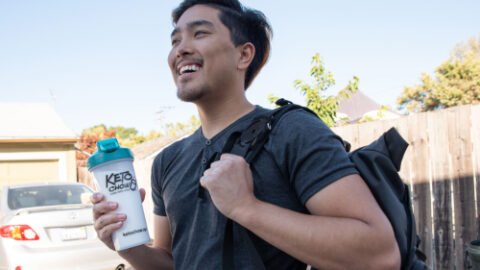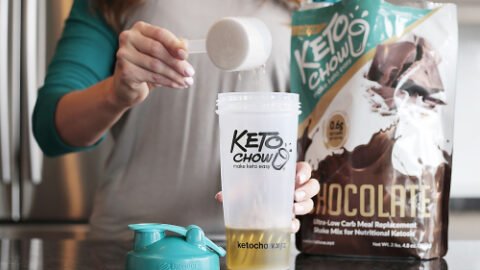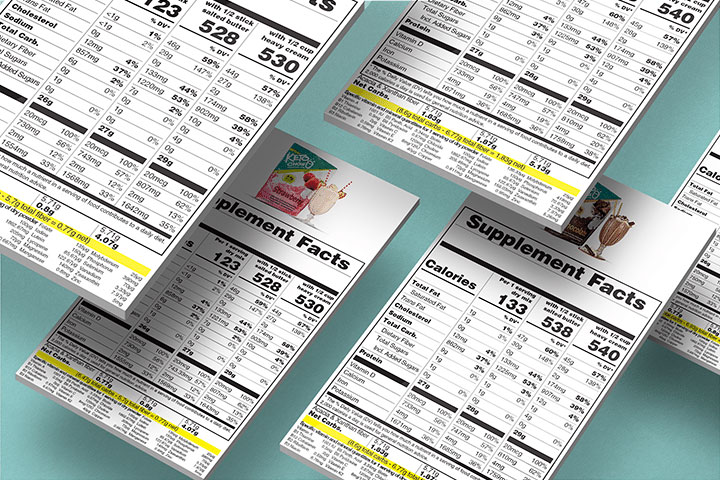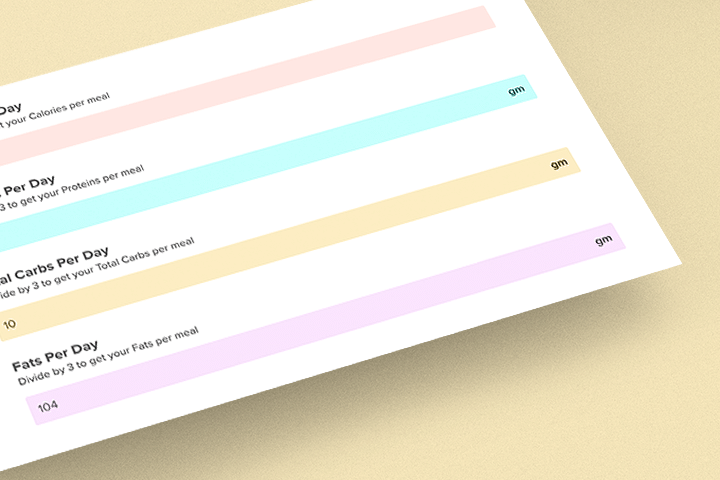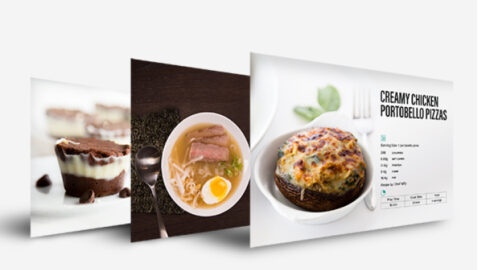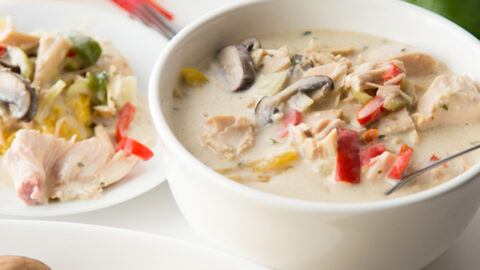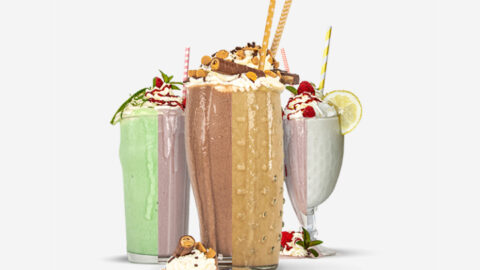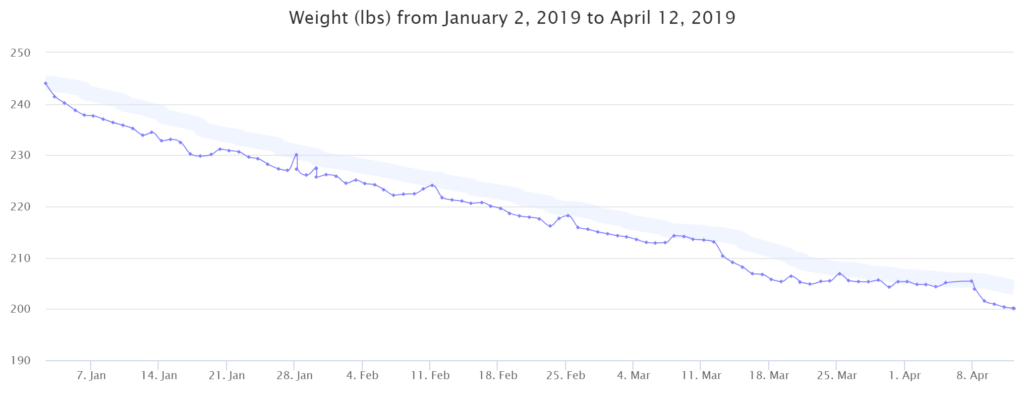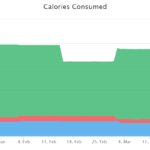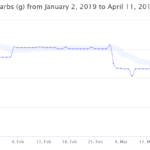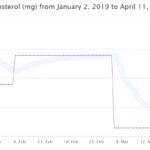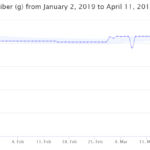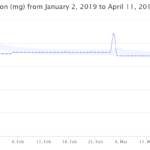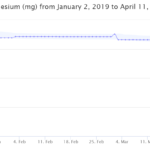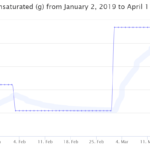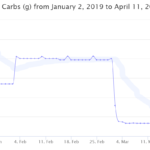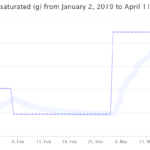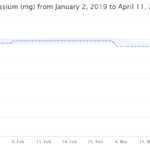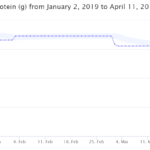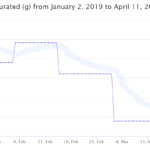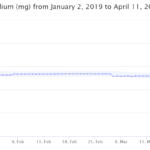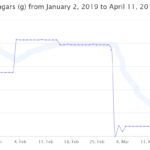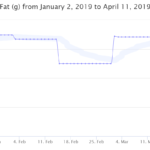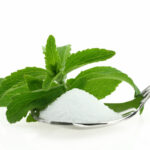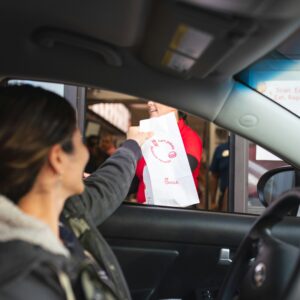Abstract
I didn't Die
I say that in all seriousness because there are many people that think you will die (or at least not be healthy) if you attempt the sort of thing I did:
- “Your brain requires 200g of carbohydrates a day or you’ll go into a coma”
- “If you don’t chew your food your body can’t regulate hunger and you’ll have health complications”
- “Sucralose will completely mess up your gut bacteria”
- “Dairy will cause inflammation, trigger insulin, and prevent ketogenesis”
- Etcetera…
Experiment Methodology
In the original blog post about the experiment, I outlined the basic design of the experiment and the goals, but the short version is:
- For the first 6 weeks, the focus would be on weight loss
- For the following 8 weeks, I would use different types of fat in my Keto Chow and have weekly blood tests to measure my lipid system’s response to that variable.
This experiment served as a follow-up to the previous 42 day experiment I did in early 2018.
- I was already eating a ketogenic diet at the outset of this experiment.
- During the course of the experiment, 6 days a week, I would use the P90 program for exercise, not to be confused with P90x.
- January 2 is the first weigh-in for the contest – it establishes the “baseline” against which the individual progress is calculated. The contest looks for % change in body weight.
- The first 6 weeks (up to day 42), my primary goal was weight loss, I was later surprised to learn that the weight loss challenge was 9 weeks, not 6. Oops!
- After the weight loss phase, I would change to a science phase using different types of fat for a 2 week period:
- Keto Chow with just heavy cream for days 42-44 to recover from the fast and then get a blood test for the baseline of the science portion.
- Keto Chow with just heavy cream for 2 weeks.
- Keto Chow with just Avocado Oil for 2 weeks.
- Keto Chow with Avocado Oil and MCT Oil for 2 weeks.
- Keto Chow with butter for 2 weeks.
Test Plan:
- On day 45, both of us had blood tests taken, these were repeated every week (Friday) at the end of that 7 day period.
- My weight would be tracked using a Withings (Nokia) scale. Beverly logged her weight manually
- Every day we both tested blood ketones using a “KetoMojo” blood tester due to the lower cost per ketone test. I also tested my breath acetone using a LEVL meter
- I took body measurements using a “Zozo Suit” – which is a black suit with white dots. A phone application uses the dots to create a 3D model and outputs full body measurements.
- I had a DEXA scan done at the end of the experiment (I totally spaced doing one at the beginning)
Food Logs and Nutrient Analytics
One of the main criticisms of Morgan Spurlock’s “Supersize Me” is that he absolutely refuses to release his food logs. You can’t take an experiment, even an N=1 experiment, seriously unless you can look at the data. Here are my own food logs for the entire experiment: Cronometer Full Nutrition Report (includes daily food logs and analysis) The data was collected using Cron-O-Meter.
Measurements
I started this experiment at 244.016 lbs. on January 2. The final weigh in on April 12 was 200.107 lbs. – meaning my total weight loss for the 100 days was 43.909 lbs or 19.91 kg. I averaged a 0.439 lb weight loss per day over the 100 days (it was 0.49 up until day 80).

Here are all of the measurements I took plotted on a graph, you can see the raw values on the “Zozo Suit” Tab of this spreadsheet.
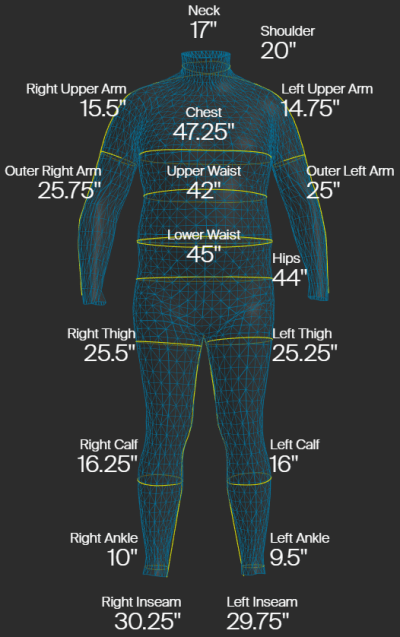
Starting Measurements
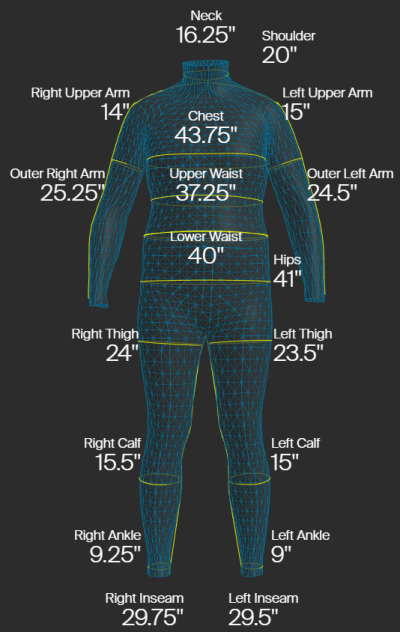
Ending Measurements
Test Results (Blood and others)
Beverly and I each did 9 blood tests during the experiment. The easiest way to look at the results is by reading this spreadsheet – specifically the “100 Days of Keto” tab. Here are some of the graphs from the spreadsheet.
Note that the spreadsheet and the graphs have data from all of the experiments I’ve done thus far.
LDL – P Comparison
Small LDL-P Comparison
LDL-C Comparison
HDL-C Comparison
Triglycerides Comparison
Total Cholesterol Comparison
Chris Blood Tests
- Blood Test 2019-02-15 Baseline, Heavy Cream
- Blood Test 2019-02-22 Heavy Cream
- Blood Test 2019-03-01 Heavy Cream
- Blood Test 2019-03-08 Avocado Oil
- Blood Test 2019-03-15 Avocado Oil
- Blood Test 2019-03-22 Avocado Oil and MCT Oil
- Blood Test 2019-03-29 Avocado Oil and MCT Oil
- Blood Test 2019-04-05 Butter
- Blood Test 2019-04-12 Butter
- Chris Dexa Scan
Beverly Blood Tests
- Blood Test 2019-02-15 Baseline, Heavy Cream
- Blood Test 2019-02-22 Heavy Cream
- Blood Test 2019-03-01 Heavy Cream
- Blood Test 2019-03-08 Avocado Oil
- Blood Test 2019-03-15 Avocado Oil
- Blood Test 2019-03-22 Avocado Oil and MCT Oil
- Blood Test 2019-03-29 Avocado Oil and MCT Oil
- Blood Test 2019-04-05 Butter
- Blood Test 2019-04-12 Butter
Experience
Chris’ daily video log updates (and accompanying text summaries)
- 100 Days of Keto (Chow) Day 01
- 100 Days of Keto (Chow) Day 02
- 100 Days of Keto (Chow) Day 03
- 100 Days of Keto (Chow) Day 04
- 100 Days of Keto (Chow) Day 05
- 100 Days of Keto (Chow) Day 06
- 100 Days of Keto (Chow) Day 07
- 100 Days of Keto (Chow) Day 08
- 100 Days of Keto (Chow) Day 09
- 100 Days of Keto (Chow) Day 10
- 100 Days of Keto (Chow) Day 11
- 100 Days of Keto (Chow) Day 12
- 100 Days of Keto (Chow) Day 13
- 100 Days of Keto (Chow) Day 14
- 100 Days of Keto (Chow) Day 15
- 100 Days of Keto (Chow) Day 16
- 100 Days of Keto (Chow) Day 17
- 100 Days of Keto (Chow) Day 18
- 100 Days of Keto (Chow) Day 19
- 100 Days of Keto (Chow) Day 20
- 100 Days of Keto (Chow) Day 21
- 100 Days of Keto (Chow) Day 22
- 100 Days of Keto (Chow) Day 23
- 100 Days of Keto (Chow) Day 24
- 100 Days of Keto (Chow) Day 25
- 100 Days of Keto (Chow) Day 26
- 100 Days of Keto (Chow) Day 27
- 100 Days of Keto (Chow) Day 28
- 100 Days of Keto (Chow) Day 29
- 100 Days of Keto (Chow) Day 30
- 100 Days of Keto (Chow) Day 31
- 100 Days of Keto (Chow) Day 32
- 100 Days of Keto (Chow) Day 33
- 100 Days of Keto (Chow) Day 34
- 100 Days of Keto (Chow) Day 35
- 100 Days of Keto (Chow) Day 36
- 100 Days of Keto (Chow) Day 37
- 100 Days of Keto (Chow) Day 38
- 100 Days of Keto (Chow) Day 39
- 100 Days of Keto (Chow) Day 40
- 100 Days of Keto (Chow) Day 41
- 100 Days of Keto (Chow) Day 42
- 100 Days of Keto (Chow) Day 43
- 100 Days of Keto (Chow) Day 44
- 100 Days of Keto (Chow) Day 45
- 100 Days of Keto (Chow) Day 46
- 100 Days of Keto (Chow) Day 47
- 100 Days of Keto (Chow) Day 48
- 100 Days of Keto (Chow) Day 49
- 100 Days of Keto (Chow) Day 50
- 100 Days of Keto (Chow) Day 51
- 100 Days of Keto (Chow) Day 52
- 100 Days of Keto (Chow) Day 53
- 100 Days of Keto (Chow) Day 54
- 100 Days of Keto (Chow) Day 55
- 100 Days of Keto (Chow) Day 56
- 100 Days of Keto (Chow) Day 57
- 100 Days of Keto (Chow) Day 58
- 100 Days of Keto (Chow) Day 59
- 100 Days of Keto (Chow) Day 60
- 100 Days of Keto (Chow) Day 61
- 100 Days of Keto (Chow) Day 62
- 100 Days of Keto (Chow) Day 63
- 100 Days of Keto (Chow) Day 64
- 100 Days of Keto (Chow) Day 65
- 100 Days of Keto (Chow) Day 66
- 100 Days of Keto (Chow) Day 67
- 100 Days of Keto (Chow) Day 68
- 100 Days of Keto (Chow) Day 69
- 100 Days of Keto (Chow) Day 70
- 100 Days of Keto (Chow) Day 71
- 100 Days of Keto (Chow) Day 72
- 100 Days of Keto (Chow) Day 73
- 100 Days of Keto (Chow) Day 74
- 100 Days of Keto (Chow) Day 75
- 100 Days of Keto (Chow) Day 76
- 100 Days of Keto (Chow) Day 77
- 100 Days of Keto (Chow) Day 78
- 100 Days of Keto (Chow) Day 79
- 100 Days of Keto (Chow) Day 80
- 100 Days of Keto (Chow) Day 81
- 100 Days of Keto (Chow) Day 82
- 100 Days of Keto (Chow) Day 83
- 100 Days of Keto (Chow) Day 84
- 100 Days of Keto (Chow) Day 85
- 100 Days of Keto (Chow) Day 86
- 100 Days of Keto (Chow) Day 87
- 100 Days of Keto (Chow) Day 88
- 100 Days of Keto (Chow) Day 89
- 100 Days of Keto (Chow) Day 90
- 100 Days of Keto (Chow) Day 91
- 100 Days of Keto (Chow) Day 92
- 100 Days of Keto (Chow) Day 93
- 100 Days of Keto (Chow) Day 94
- 100 Days of Keto (Chow) Day 95
- 100 Days of Keto (Chow) Day 96
- 100 Days of Keto (Chow) Day 97
- 100 Days of Keto (Chow) Day 98
- 100 Days of Keto (Chow) Day 99
- 100 Days of Keto (Chow) Day 100
- 100 Days of Keto (Chow) Day 101
Beverly’s weekly experience posts
- Beverly and Her Day 1
- Beverly’s Week 1
- Beverly’s Week 2
- Beverly’s Week 3
- Beverly’s Week 4
- Beverly’s Week 5
- Beverly’s Week 6
- Beverly’s Week 7 (Week 1 of Science)
- Beverly’s Week 8 (Week 2 of Science)
- Beverly’s Week 9 (Week 3 of Science)
- Beverly’s Week 10 (Week 4 of Science)
- Beverly’s Week 11 (Week 5 of Science)
- Beverly’s Week 12 (Week 6 of Science)
- Beverly’s Week 13 (Week 7 of Science)
- Beverly’s Week 14 (Week 8 of Science) Day 99 !!!
- Beverly’s Day 100 and Following
I’ve had several other people that have been interested in doing their own 100 day challenge, asked if there were any things to watch out for. Here is my short list:
- Socially it can really be a drag to not be eating solid food/only eating Keto Chow, people can be funny if you have the audacity to… not eat? Tell people beforehand so they aren’t surprised and don’t freak out and insist, especially if they’ve taken the time and trouble to prepare something special. Honestly, it’s a bit like telling people you don’t eat bread, but somehow worserer. Wait staff usually doesn’t care if you just want a drink though.
- From a digestive standpoint, there’s something fundamentally different about doing 3 meals of Keto Chow a day: some people get the runs, some people get stopped up. A probiotic tends to help either way. It took me about 12 days to finally take my own advice this time around.
- Make sure you have a good supply of blender bottles, especially if your kids like to swipe your KC but don’t like to mix replacements. I think we have 30 at our house (bottles, not children that swipe KC).
- Learn how to prepare a bunch of Keto Chow at a time. My personal preference (more on that below) is to do 3 at a time using butter.
- Get some good sugar free gum, that should satisfy any need to chew. While you’re at it, if you have any dental procedure you’ve been putting off, it’s a perfect time.
- I notice that after about a week of not chewing gum, my mouth feels “coated” – goes away for a few hours with drinking but comes back until I grab some gum.
Results and Conclusion
Heavy Whipping Cream
Saturated fat has been considered “bad” for health since Ancel Keys falsified data (“conveniently cherry-picked and omitted confounding data” if you prefer) in his “Seven Countries” study in 1953 as a way to corroborate his preconception that eating animal fats were bad for human health. A myriad of Senate committees, USDA policies, and other recommendations have followed – giving us the current common belief that saturated fat will “clog arteries” even though fats can’t traffic through your blood unless they are encased in a lipoprotein.
Despite all that, my blood tests on HWC look quite good; with lower triglycerides, relatively normal HDL numbers, and LDL numbers that are irrelevant to all-cause mortality but rather normal as well. =) Given the amount of saturated fat I typically consume via HWC, most diet experts would assume I would be dead already. My first blood test with HWC, I was finishing up my “weight loss” phase and had been using MCT oil with HWC – that appears to be reflected in the blood test results.
Avocado Oil
The next phase where I was using the primarily Monounsaturated fats in Avocado Oil (hereafter “AO” – thanks =) there was a serious reduction in my LDL-P, about a 30% reduction, Beverly saw a reduction as well on her second week. My Small LDL-P was a bit all over the place, and both our LDL-C reduced, likely due to the reduction in saturated fats. Unfortunately, this also meant a reduction in my HDL-C – which is a marker I very much DO care about. My Triglycerides continued going down and both of our total cholesterol also came down.
Avocado Oil with MCT Oil
Replacing 15ml (per meal) of the AO with Medium Chain Triglyceride (MCT) Oil caused a dramatic change in both of our lipid panels. I saw a 58% increase in triglycerides, Beverly saw 34% – this is particularly interesting because when I previously did a week of liquid coconut oil (which was 50% MCT) I saw a reduction in Trigs and increase in HDL, the opposite of what both of us saw with AO and MCT. I think that may have something to do with the other long-chain saturated fats present in the coconut oil. Regardless, based on what I saw and especially the abysmal HDL-C I went down to (26!?), I do not plan to use AO and MCT in the future.
Butter
Butter was an interesting experiment, I didn’t expect it to work out as fantastic as it did. Originally I thought I would need to mix up each meal warm and only would be able to use the savory flavors. Boy was I wrong! Using a blender and warm water, the acacia gum will emulsify the butter and hold it in suspension even after refrigerating. You can consume it cold as-is, or warm it up. But all of that is irrelevant if the blood test shows it to be problematic.
Most importantly (to me), my HDL-C went back up using butter (Beverly has always had amazing HDL numbers, nearly always above 90 throughout the experiment), both of our triglycerides went back down (no more MCT oil apparently does that); my fasting insulin, CRP, Remnant (VLDL) Cholesterol and small LDL-P, all came down with butter.
One of the things I like a lot about butter is its lipid composition is extremely high in very stable fats that do not readily oxidize, 63.33% of the fat is this fully hydrogenated fat. 25.92% is mono-unstable and will slowly react with oxygen, and a VERY small percentage is poly-unstable (readily oxidizes) with only 3.75% of the fatty acids being comprised of that kind (full compositional analysis is on this page ). Additionally, of the stable/saturated fats, you have a good number of short chain fats (6.45% of total fat), medium chain (7.77% of total fat), and an astounding 26.75% of the total fat content is C16 with 16 carbons. Palmitic Acid, as it’s known, has an F:N ratio of 0.48 which means it does some VERY cool stuff in your cells. If you want to really get into it, Dr. Michael Eades can explain what that all means.
Conclusion
Butter appears to be a winner
- Butter costs less than Heavy Cream and Avocado Oil. Using pricing from my local grocery store I get $1.229 per 1000 calories for HWC, $0.981 for AO, and $0.796 per 1000 calories for butter. That same 1000 calories of butter have 0.08g of total carbs compared to 8.35g for the HWC.
- Butter does not contain any controversial carrageenan or other emulsifiers you find in Heavy Whipping Cream. Personally, I don’t care about them but some people get quite excited about them.
- Butter has a better impact on my blood markers.
- Butter is easier to store, it freezes exceptionally well is compact.
- Butter is easier to transport. The salted variant is quite stable without refrigeration for a good amount of time, it won’t spill (unless you get it too warm =), it’s not in a glass bottle that will shatter. Should also be noted that TSA currently doesn’t care about butter, unlike a bottle of oil.
- Butter tastes amazing. Personally, I prefer the salted butter because of the additional sodium and salty taste, especially in the chocolate flavors of Keto Chow (Chocolate, Mint, Toffee, Peanut butter, etc…)
